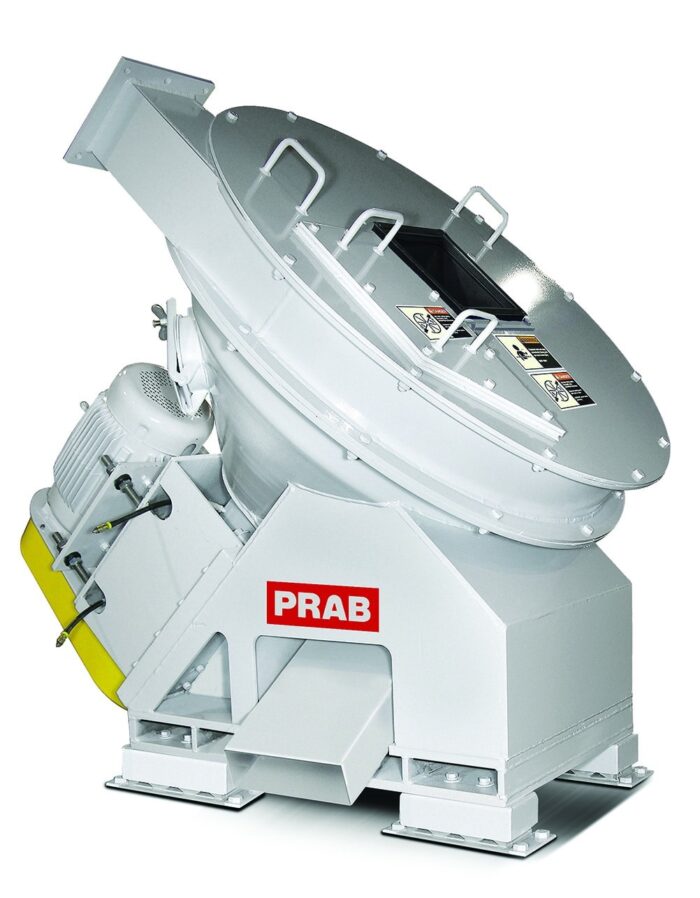
The metalworking industry, like many other manufacturing market segments, has been forced to scrutinize capital equipment purchases in an effort to squeeze the most from a tight capital project budget with short expected returns. Often, pre-project planning and equipment evaluation do not take into account the long-term operational effects of rugged operating conditions, faster machining times, material alloys with challenging compositions, and varying material quality from global sourcing options. Manufacturing optimization and production time can be compromised if operational factors and wear strategies are not part of the up-front equipment evaluation discussions. Good industrial equipment design will build in a safety factor for operational wear; however, specific application and production details should be shared with the equipment design engineer to gain the best value and longest equipment life.
Wear abatement strategies are especially important when selecting metal scrap handling equipment. Physics and experience dictate where and how a particular part will erode over time. Various wear-resistant materials provide specific advantages, but may have drawbacks in other functional areas. Knowing exactly what material the equipment will be running is the key to a durable installation. Up front communication of factory conditions and concerns and constraints are vital to long-term service life and unplanned downtime. Certain application data is critical for the design engineer to consider when developing wear abatement strategies for metal scrap handling equipment, such as the specific alloy(s) to be handled; metal chip geometries, densities and abrasiveness expected; how equipment will be fed (continuous or batch); specific cutting fluid(s) and volume; actual normal process rate (lbs/hr.); maximum surge or instantaneous rate (lbs/hr.); and the frequency and description of bar ends, parts or tramp metal in the chips.
The data provided will give the equipment engineer enough detail to deliver the correct level and placement of wear resistance for the application while deploying realistic, cost-effective recommendations. The Wear Strategies table (on page 29) shows some of the materials and methods applied to PRAB design engineering.
As an example, metal chip wringers employ many of the various wear abatement strategies. These units extract cutting fluids from machine shop scrap by exposing the chips to 600 g of force at the separation screen. Given today’s alloys and production rates, wringer components are subject to severe sliding and impact abrasion, depending on their position in the machine and the characteristics specific to the scrap being processed. To compound the issue, wringer parts need to be formed, cut or machined to produce the unit.
Read: The Surprising Value in Fluid Recovery
Here are some specific strategies to protect a chip wringer in an extreme wear application:
Scrap metal handling equipment requires strategic uses of specialized materials to produce a rugged design. An economic balance between initial cost and durability yields recovery equipment with a low total cost of ownership. Ignoring durability in today’s high volume, special alloy environment usually means loss of production because of unscheduled downtime or replacement of equipment after a long battle to keep it running. When planning the purchase of metal scrap or cutting fluid separation equipment, shops should take into account an application-specific wear abatement plan to be sure the investment is sound. Help is available at the earliest stages of a project to be sure the correct equipment is specified to do the job over time.
|
|
Medium Hard AR |
AR 400/AR500 |
Manganese Steel (11-14%) |
Hard Surfacing Welding Rod |
Heat Treatment |
Ni-Hard |
|
Hardness |
235 BHN* |
400 BHN/500 BHN |
Up to 600+ BHN |
RC 60+** |
RC 32-RC 62 (Depends on base metal and process) |
600 BHN |
|
Anticipated Wear |
Sliding/Rolling |
Sliding |
Impact/Sliding |
Impact/Sliding |
Impact/Sliding |
Sliding |
|
Examples of Use in PRAB Equipment |
Conveyor Tracks, Wear Liners, Oscillator and Harpoon Conveyors |
Custom Designs for Severe Sliding Wear Applications |
Wringer Discharge Scrolls, Wringer Paddles, Fan Blades |
Wringer Liners, VAC Crusher Tools, ScrapVeyor Flights |
Shredder Knives, Pipe Bends, Cast Iron VAC Parts |
Pipe Elbow Segments and Cast Isolation Joints |
|
Relative Cost (1 = Lowest Cost) |
1 |
2 |
3 |
6 |
4 |
5 |
|
Notes |
General Use AR Steel |
Difficult to Fabricate |
Variable Hardness, Work Hardens in Use, Difficult to Fabricate |
Expensive and Difficult to Apply a Smooth Deposit, Cannot Weld “Out of Position” |
Through Hardening, Carburization, Flame Hardened, Austempering |
Limited to Castable High Volume Parts, Relatively Brittle |
Read full article on productionmachining.com.
Carl Baker is PRAB’s VP of Sales & Engineering. 5801 East N Ave., Kalamazoo, Mich. 49048, 877-558-9834, www.prab.com.